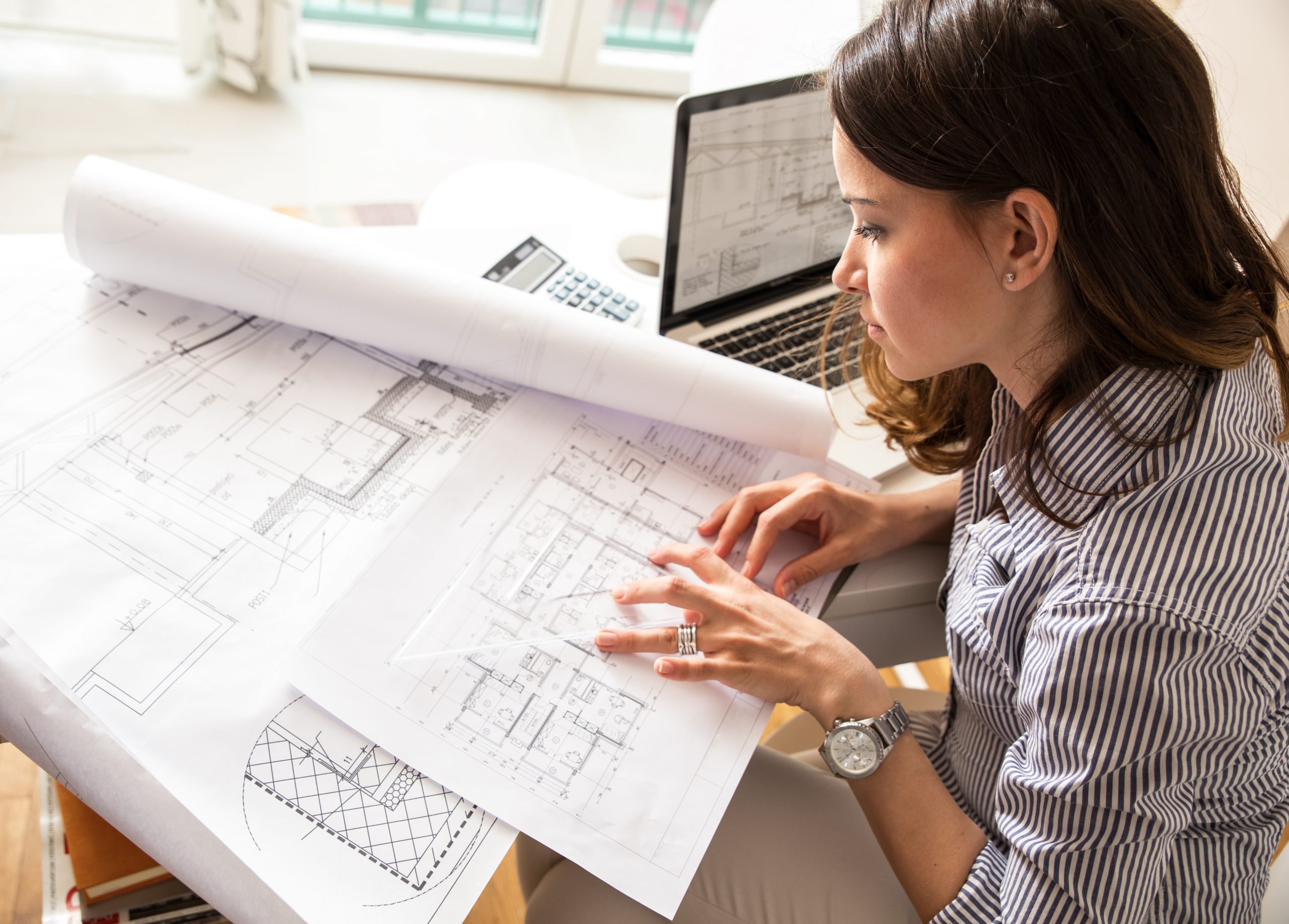Architect Interview Questions You Should Be Ready to Answer
Architect Interview Questions You Should Be Ready to Answer
Blog Article
Recognizing the Diverse Occupation Paths Available for Aspiring Architect
As an aspiring Architect, you have a globe of job paths waiting for you. Whether you're attracted to typical architecture or the nuances of lasting style, there's a niche that lines up with your passions.
Standard Architecture: Designing Frameworks and buildings
Traditional style focuses on designing structures and structures that blend functionality with aesthetic appeal. Your styles can reflect social heritage, showcasing local traditions while meeting contemporary demands.
You'll establish skills in drafting, model-making, and website analysis, enabling you to visualize and connect your ideas properly. Engaging with customers, you'll need to comprehend their vision and convert it into possible designs.
In addition, constructing codes and sustainability practices are vital in your work, ensuring your frameworks are risk-free and ecologically friendly. As you grow in your career, you'll locate possibilities in residential, commercial, and even restoration tasks, each offering distinct difficulties. Accepting typical architecture leads the way for a meeting occupation that pays tribute to the past while forming the future.
Urban Preparation: Forming Neighborhoods and Public Spaces
As a hopeful Architect, you can play a vital role as a metropolitan organizer, changing exactly how communities operate and engage. By utilizing community engagement approaches, you'll guarantee that locals have a voice in shaping their environment. Plus, incorporating sustainable layout principles will aid develop areas that not only satisfy today's demands but likewise protect the future.
Role of Urban Planners
While several might consider engineers as the single enthusiasts behind structures, metropolitan coordinators play a crucial function in forming the wider landscape of areas and public areas. They examine land usage, zoning legislations, and community needs to produce lasting environments that boost top quality of life. By teaming up with numerous stakeholders, you'll help design parks, transportation systems, and houses that promote social communication and ease of access. Urban planners likewise concentrate on ecological considerations, making certain that developments incorporate eco-friendly areas and assistance biodiversity. Your experience in spatial style and area characteristics enables you to envision future growth while maintaining social heritage. In this critical duty, you'll directly influence just how people experience their environments, making every task a possibility for positive change.
Neighborhood Interaction Techniques
Reliable neighborhood interaction techniques are important for metropolitan coordinators to ensure that the voices of citizens are heard and valued in the planning process. To cultivate meaningful discussion, you must prioritize open forums and workshops where neighborhood participants can reveal their concepts and problems. By actively incorporating and listening feedback, you'll create spaces that reflect the neighborhood's needs, inevitably leading to more effective and sustainable urban environments.
Sustainable Design Concepts
When developing urban rooms, incorporating sustainable design principles is essential for creating environments that prosper both ecologically and socially. You ought to start by focusing on power efficiency, utilizing materials that lower waste and promote recycling. Consider incorporating environment-friendly areas, like yards and parks, to improve biodiversity and enhance air quality. Advertising walkability and public transport can reduce dependence on cars, cultivating a much healthier neighborhood.
Designing with water preservation in mind is likewise key-- assume concerning rain yards and permeable surface areas to manage stormwater. Entailing area participants throughout the planning process assurances that the rooms you develop meet their needs and urge social interaction. By embracing these concepts, you'll add to vivid, sustainable city landscapes that benefit everyone.

Landscape Design: Creating Sustainable Exterior Environments
As you discover landscape design, you'll find crucial design principles that produce functional and attractive outdoor areas. Sustainable techniques play an important function in making sure these environments thrive while minimizing environmental influence. Plus, you'll find a variety of profession opportunities that allow you to make a real difference in how individuals connect with nature.
Style Principles in Landscape
Comprehending style concepts in landscape architecture is crucial for creating sustainable outdoor atmospheres that balance with nature. You'll require to ponder aspects like percentage, equilibrium, and range to assure your styles really feel natural and inviting. Furthermore, pay interest to seasonal modifications, developing with products that enhance the environments year-round.
Sustainable Practices Overview
Sustainable methods in landscape design not only concentrate on aesthetic appeals yet also prioritize ecological wellness and source preservation. By integrating indigenous plants, you boost biodiversity and lower the demand for chemical fertilizers and chemicals. Carrying out effective watering systems aids conserve water and minimizes overflow, safeguarding neighboring environments. You can create rooms that promote soil wellness, such as using organic materials and practicing permaculture principles. Additionally, integrating eco-friendly framework, like rain gardens and porous pavements, help in stormwater management and lowers urban warm. When you create outdoor atmospheres with sustainability in mind, you add to a healthier earth and provide rooms that foster area connection. Eventually, these techniques ensure your styles benefit both individuals and the setting for years to find.
Job Opportunities Exploration
With a strong structure in lasting methods, landscape architecture uses a selection of occupation courses that permit you to make a purposeful impact on the setting. Urban organizers commonly team up with landscape architects to develop environment-friendly rooms in city settings, boosting city livability. If you're enthusiastic regarding education, consider coming to be a landscape architecture instructor, inspiring future generations.
Lasting Style: Concentrating On Eco-Friendly Practices
As you discover your career in style, embracing environmentally friendly methods can establish you apart in a competitive area. Sustainable design concentrates on developing buildings that reduce ecological impact while improving occupant health. By including renewable products, energy-efficient systems, and sustainable structure strategies, you'll add to a greener future.
Start by acquiring knowledge of green accreditations like LEED or BREEAM, which can bolster your qualifications. Take into consideration how natural light, ventilation, and thermal effectiveness can maximize design. Collaborate with designers and environmental consultants to introduce options that minimize waste and conserve sources.
Don't forget the importance of neighborhood participation-- appealing regional stakeholders can motivate layouts that integrate with the environment. As customers increasingly focus on sustainability, your competence in environment-friendly methods will not only bring in tasks yet additionally meet your passion for accountable design. Welcome this critical facet of the profession, and watch your job grow.
Historic Preservation: Shielding and Restoring Social Heritage
While you begin on your building trip, think about the necessary duty of historic conservation in preserving our cultural heritage. This field focuses on the protection and repair of significant structures, sites, and structures that tell the stories of our past. By involving in historical conservation, you'll help safeguard the architectural tradition that forms neighborhood identification.
As a historical preservation Architect, you'll assess historical value and examine the problem of frameworks. You'll website work carefully with preservationists and historians to guarantee authentic reconstruction methods are employed. This profession course permits you to blend imagination with research, allowing you to create options that value original materials and craftsmanship.
Your work not just adds to sustainability by reusing existing buildings but likewise cultivates a feeling of pride within neighborhoods. Embracing this course will assist you end up being a guardian of history, preserving the stories and aesthetics that improve our lives.
Interior Design: Enhancing Indoor Spaces
Historic preservation and interior design both share a dedication to enhancing the developed atmosphere, however they concentrate on different elements. While historic conservation highlights keeping a framework's cultural and historic value, interior design zeroes in on maximizing interior spaces for performance and looks.
As an aspiring Architect, you'll locate that indoor design permits you to blend creative thinking with technological abilities. You'll create rooms that not only look great but likewise promote comfort and performance. This area includes understanding just how light, shade, and materials engage within a room, affecting state of mind and functionality.
You'll work with various tasks, from residential homes to business offices, making sure that each atmosphere satisfies the needs of its residents. By focusing on individual experience, you can transform interiors right into useful and motivating rooms, making a substantial impact on just how individuals interact with their environments. Embrace the opportunity to boost indoor settings and form the means people function and live.
Industrial Style: Combining Functionality With Appearances
Industrial design plays a necessary duty in developing products that effortlessly mix aesthetic appeals with performance, making sure that what you use day-to-day is not just visually enticing but likewise useful. As an ambitious Architect, you could involve on your own in this area, concentrating on making everything from furniture to consumer electronics. Your job includes comprehending individual needs, products, and manufacturing processes, allowing you to create cutting-edge solutions that boost day-to-day experiences.
In industrial layout, you'll typically collaborate with producers, marketing experts, and designers, making more info sure that your layouts are not only beautiful but additionally practical. You'll find out to balance type and feature, prioritizing functionality without giving up style. By developing your abilities in laying out, 3D modeling, and prototyping, you'll be well-appointed to bring your ideas to life. This job course offers a vibrant setting where creative thinking meets functionality, making it a rewarding option for engineers interested in forming the items of tomorrow.
Frequently Asked Questions
What Educational Credentials Do I Need to End Up Being an Engineer?
To come to be a designer, you'll need an expert degree in style, typically a Bachelor's or Master's. Furthermore, you'll need to finish a teaching fellowship and pass the Architect Registration Evaluation to exercise legally.
Exist Certification Requirements for Different Building Profession Paths?
Yes, there're certification demands for various architectural courses. Architect. You'll require to pass exams, full internships, and sometimes seek specialized training, depending on your selected emphasis, like landscape design, urban layout, or historical preservation
What Software Abilities Are Essential for Designers Today?

Exactly How Can I Gain Practical Experience While Examining Design?
You can acquire functional experience by interning read more at building firms, taking part in style competitors, volunteering for area projects, or collaborating with schoolmates on real-world projects. These opportunities improve your skills and construct beneficial connections in the sector.
What Task Opportunities Exist Outdoors Traditional Style Firms?
You can explore numerous work chances outside standard style companies, like metropolitan planning, interior layout, landscape design, construction monitoring, genuine estate advancement, or even roles in sustainability consulting. Each deals unique obstacles and incentives.
Whether you're drawn to standard architecture or the subtleties of lasting style, there's a particular niche that aligns with your rate of interests.When designing city areas, including sustainable design concepts is vital for creating settings that prosper both ecologically and socially.As you discover landscape architecture, you'll find necessary style concepts that develop practical and lovely outside areas.Understanding layout concepts in landscape style is vital for creating sustainable exterior environments that harmonize with nature.In industrial design, you'll usually team up with marketing professionals, engineers, and producers, ensuring that your styles are not only beautiful yet likewise practical.
Report this page